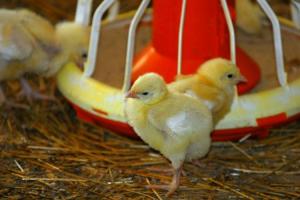Water: The most basic yet overlooked element of poultry nutrition
Water is essential for life, yet water intake usually gets less attention than feed intake. We focus on quality, density and processing of feed, but we tend to take water for granted because it costs “nothing” — or at least does not appear on the feed bill.
Feed and water are closely linked, however. Birds typically drink 1.6 to two times the equivalent weight of feed, and, if water intake is limited, then feed intake declines. Furthermore, all digestive activity is dependant on water. Poor water quality can mean getting less than expected results from even the best quality feed.
Let’s get back to the basics of this basic element. There are several ways we can use water intake to help newly-placed chicks get a good start.
Water quality profiles
Minerals, hard and soft water, pH and alkalinity
Mineral content, pH, microbial contamination and temperature affect water quality and intake. Water quality profiles include pH, alkalinity and hardness.
pH is a measure of acidity, with pure water having a pH of 7. Values of less than 7 are considered acidic, while those above 7 are basic, or “alkaline.” Alkalinity reflects the capacity of water sources to buffer added acids without changing pH (total acidity). Water hardness, pH and/or alkalinity are not always directly associated, but generally, hard water has a higher pH.
Hard water contains larger amounts of minerals in the form of calcium and magnesium ions, which are picked up as rainwater percolates down through rock layers. In contrast, soft water has more sodium ions. The challenge with hard water is that it causes scale buildup, which gradually constricts pipes. The scale slows water flow, which ultimately reduces water consumption and, consequently, feed intake.
Minerals, such as magnesium, iron, sulfur, sodium and copper, can cause water rejection at very high concentrations due to bitter taste, or they can have laxative effects, whether from hard or soft water. Elevated mineral levels can be due to natural reasons or pollution.
Bacterial counts and biofilms
Zero bacteria per milliliter of water is desirable, but contamination is common. Coliform bacteria are of special concern. Coliforms are found in animal and human digestive tracts, and their presence in ground or surface water indicates fecal contamination.
Biofilms result from bacterial colonies that adhere to the inner walls of water lines. They produce a film that attracts other microbes and debris. A biofilm might occur in patches and can, on occasion, completely cover pipe walls. Biofilms protect bacteria from antibiotics and disinfectants and can block water lines. Bacteria (including coliforms) in biofilms flourish in places where water moves slowest or temperature is elevated, like the end of drinker lines, and when water remains in the line before the next use.
Using water to promote gut health
Chick hydration after placing
Early and sufficient water intake is critical during the first week of life. It is not uncommon for chicks to arrive at the shed dehydrated, and quick resolution is needed. Chicks drink sooner when placed near drinkers that dispense clean water at the right temperature and flow rate. Attention-getting lights and reflective drinker surfaces help, too.
Water and gut health
The chick’s digestive tract develops rapidly over the first week of life, and anything we can do to promote gut health during this time pays off in lower early mortality and overall feed efficiency. A healthy gut has the right mix of microbes, enzymes and healthy intestinal villi to aid pathogen defense and feed digestion. The medium in which these entities exist is water.
Microbial growth and digestive enzyme activity are sensitive to pH. Coliforms, including E. coli and Salmonella, grow best at pH levels above 7. In contrast, beneficial bacteria such as lactobacilli thrive at more acidic conditions (below 7). pH varies throughout the digestive tract, with values lowest (~2) in the stomach for the digestion of protein, then higher in the intestine and colon for the digestion of fats and carbohydrates. The bird needs the ability to maintain correct gut pH from the beginning, but gut cells are still developing. A simple way we can help the bird is by lowering drinking water pH.
Acidification: Prevents biofilms, lowers scale accumulation and reduces drinking water pH for better bird health
Acid-Pak 4-Way® contains a citric acid buffer, electrolytes and probiotics. When added to water, it reduces pH (i.e., increases acidity), which benefits both birds and pipes. Water pH is reduced to 4.5–5.5, which promotes the growth of normal and healthy bacteria in the gut, such as lactobacilli. At the same time, the lower pH discourages the growth of coliforms. The lower water pH also helps chicks adapt to dry feeds because it controls pH, promotes beneficial microbial growth and aids enzyme production.
Adding Acid-Pak 4-Way aids water line maintenance, too. It helps keep water flow steady, in addition to other benefits. Scale does not accumulate from hard water when acidified. Importantly, reducing pH by adding Acid-Pak 4-Way unseats biofilms in the water lines and keeps them from re-forming.
BEFORE placing your chicks, open the drinking lines, put Acid-Pak 4-Way in the water, flush the lines and THEN place the chicks.


